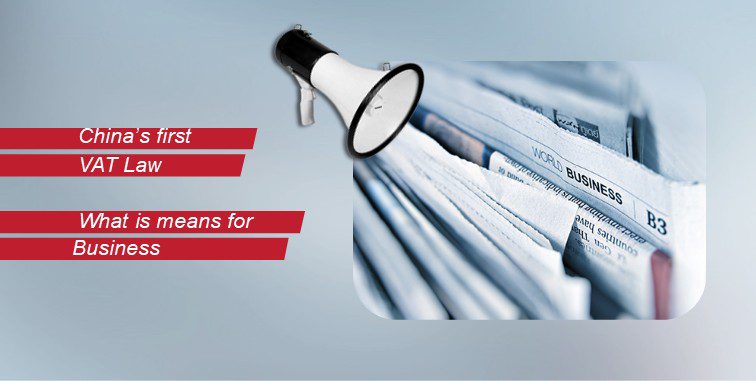In December 2024, China passed its first national Value-Added Tax (VAT) Law, marking a major shift from provisional rules to formal legislation. The law takes effect January 1, 2026. For businesses operating in or with China, now is the time to prepare.
What’s Changing?
The VAT Law does not change China’s tax rates—13%, 9%, 6%, and 0% remain—but it does provide much-needed clarity and structure. The law codifies long-standing practices while introducing important updates in areas like simplified taxation, cross-border transactions, and input tax deductions.
Here are six highlights businesses should note:
1. Clearer Rules on Taxable Transactions
Categories of taxable activity are now codified: (i) sales of goods, services, immovables and intangibles in China, as well as (ii) imported goods into China. This aligns tax treatment more closely with economic substance and helps eliminate gray areas.
2. “Place of Occurrence” Becomes Key
The VAT Law introduces an occurrence-place-oriented mechanism to determine tax liability. If the place of shipment or location of goods is within China, or if the place of consumption of services or the location of the seller is within China, VAT shall be levied.
For example:
- If a Chinese company sells R&D services to an overseas client, VAT applies.
- If a foreign company provides marketing or consulting services that are consumed in China, VAT applies—even if the provider is not based in China.
This shift will affect deal structuring, contract terms, and supply chain setups. Companies need to rethink how services are delivered and documented to determine tax exposure and qualification for exemptions.
3. Simplified Taxation Reform
A unified 3% rate replaces the previous 5% differential rates for sectors like real estate and labor dispatch. While further guidance is expected, the aim is to streamline compliance.
4. Expanded VAT Deductions
Loan services are not explicitly classified as non-deductible under the VAT Law. Given that the VAT Law supersedes the current regulatory notice prohibiting the deductibility of loan services, it can be interpreted that VAT is applicable on interests on loan. We note that the resulting input VAT arising from interests on loan services is not included in the non-creditable input VAT. Allowing the crediting of input VAT on loans will reduce the tax burden of enterprises. We are waiting for the detailed implementation rules that should explain whether and how input VAT is going to be applied. Moreover, the scope of non-deductible “direct consumption” has been narrowed—offering more room for businesses to manage costs effectively.
5. Extended Pricing Adjustment
Existing regulations allow tax authorities to determine the taxable sales value when transaction prices are deemed unreasonably low. The VAT Law explicitly extends this authority to scenarios where prices are abnormally high, in addition to low prices, to curb attempts to manipulate VAT deductions via intentional pricing adjustments.
As a result, businesses are likely required to ensure that pricing aligns with the arm’s length principle and maintain documentation supporting their pricing rationale to mitigate tax-related compliance risks.
6. Formalization of Credit Refunds and Compliance Oversight
The law legalizes VAT credit refunds and introduces a formal interagency oversight system involving tax authorities, customs, financial regulators, and others – pointing to stronger, data-driven enforcement.
What Should Businesses Do Now?
2025 is the transition year. Use it to:
- Audit your transaction flows and supply chains to map cross-border services and assess place-of-consumption risks.
- Review contract terms to clarify VAT liabilities.
- Train internal teams on the new rules.
- Update ERP and invoicing systems to reflect the place-of-consumption model.
If you’d like to understand how this impacts your operations, feel free to contact Charlotte Mantoux (c.mantoux@leaf-legal.com) and Peggy Wu (p.wu@leaf-legal.com).
This publication is for informational purposes only and does not constitute legal advice. It is based on publicly available laws and regulations.













